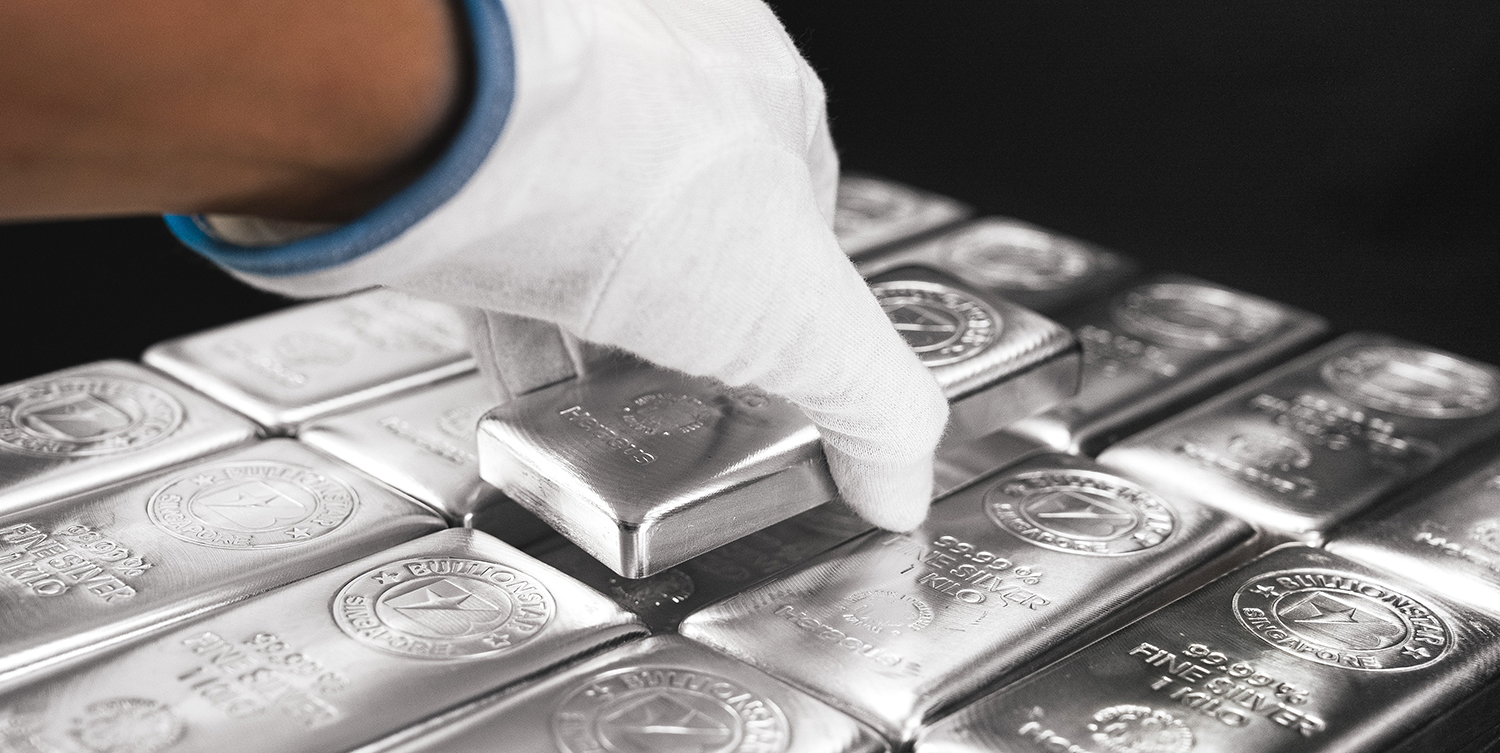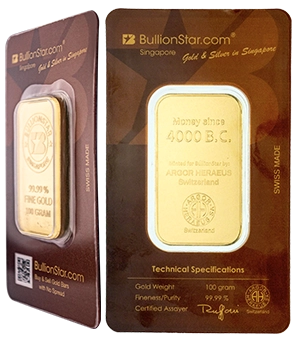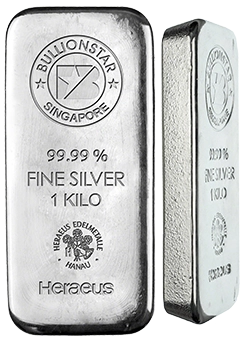Silver’s Coming Breakout: Expert Insights from Peter Krauth
The Structural Silver Deficit and Price Potential
In a recent interview with BullionStar, renowned silver market expert Peter Krauth, author of “The Great Silver Bull" and editor of Silver Stock Investor, shared compelling insights on why silver could be poised for a historic breakout. Despite already impressive gains in recent years, Krauth believes we’re still in the early innings of a major bull market that could eventually take silver to levels few investors can imagine.
Understanding the Persistent Silver Deficit
At the core of Krauth’s bullish outlook is the persistent structural deficit in the silver market. “Supply is about a billion ounces a year. About 850 million ounces or 85 percent comes from mining. And the other 15 percent roughly comes from recycling," Krauth explained. “Yet for the last four years, on average, demand has been about 1.2 billion ounces per year. So we’re looking at a 20 percent deficit every year for the last four years."
This ongoing deficit raises a crucial question: How can silver prices remain relatively subdued despite such a significant supply shortfall?
The Secondary Supply Cushion Is Depleting
The answer, according to Krauth, lies in the drawdown of secondary above-ground silver supplies from major exchanges. Since early 2021, inventory levels at the Shanghai Futures Exchange, the London Bullion Market Association (LBMA), and COMEX have declined dramatically—by 40% to 70% depending on the exchange.
Krauth believes these exchange inventories have temporarily buffered the price impact of the structural deficit. Large industrial consumers, especially from the solar sector, have been able to tap into these stockpiles by taking physical delivery against futures contracts. However, this buffer is rapidly depleting.
“This could go on for about maybe 12 or 18 months at the current pace. And after that, we really would dry up this secondary supply of silver," Krauth notes, referencing a supporting analysis from TD Securities that reached similar conclusions.
The Perfect Storm for Higher Silver Prices
Industrial Demand vs. Investment Demand
The changing composition of silver demand creates what Krauth describes as a perfect storm for higher prices. A decade ago, industrial applications and investment demand each accounted for roughly 50% of total silver consumption. Today, industrial demand has grown to approximately 60% of the market, with investment demand shrinking to 40%.

This shift is critically important because:
-
- Solar sector growth: Solar panel production now consumes almost 25% of annual mine supply, with demand continuing to accelerate
- Technological advancements: Newer solar technologies (Topcon and HJT) require 50-150% more silver per panel than previous generations
- Limited investment pool: When investment demand inevitably returns in force, it will be competing for a smaller portion of available supply
“When that demand comes back in a big way for people who say, I need to get my hands on some physical silver, there will now be less available each year. And that’ll help drive the price up higher and faster," explains Krauth.

Physical Tightness Already Evident
Signs of tightness in the physical silver market are already appearing. Krauth shared an anecdote about a silver mining executive who revealed that industrial consumers were offering up to $4 over spot price and making advance payments to secure supply.
“We’ve seen lease rates stay high on silver… We’ve seen exchange for physical (EFP) premiums have stayed high. And both of these things speak to serious tightness nonetheless in the silver market," Krauth notes.
Monetary Factors and Inflation
While much of silver’s recent price action has been driven by industrial factors, Krauth believes monetary and inflation-related catalysts will increasingly come into play.
Inflation and Central Bank Credibility
“I think retail investors and professional investors have really come to terms with the fact that we are in a new paradigm, a new environment when it comes to inflation and that inflation will stay elevated for probably the better part of a decade going forward," says Krauth.
He sees parallels to the 1970s, when stagflation (weak economy combined with high inflation) created an ideal environment for precious metals. Krauth anticipates central banks will eventually be forced to cut rates even in the face of persistent inflation, severely damaging their credibility.
“Cutting rates in the face of rising inflation is going to tell the market they’ve lost control, they really have no more choice. And again, this is rocket fuel for both gold and silver."
Silver’s Performance During Rate-Cutting Cycles
Krauth highlighted a particularly compelling pattern: silver’s explosive performance during Federal Reserve rate-cutting cycles. While gold tends to perform well as soon as rate cuts begin, silver typically takes off when the Fed is about halfway through its cutting cycle.
“In the last three rate cutting cycles, silver was up over 300% on average over the next 12 to 18 months or so. So silver absolutely explodes when we’re in that kind of environment."
The Gold-Silver Ratio and Price Targets

Currently, the gold-silver ratio stands at nearly 100:1, meaning it takes approximately 100 ounces of silver to buy one ounce of gold. Historically, this ratio has averaged closer to 55-60:1, suggesting silver is significantly undervalued relative to gold.
When asked about his long-term price target, Krauth stood by the projection in his book: $300 silver during a potential mania phase. While this figure might seem extreme, Krauth derives it from multiple indicators and historical patterns from previous bull markets, including a gold price target of $5,000-$10,000.
“I think that it’s very realistic but I think that we could get into an investment environment, an economic environment where gold and silver reached these tremendous highs but there has been so much inflation of fiat currencies at that point that those highs will not be as impressive or as meaningful as they might sound today."
De-Dollarization and Precious Metals
The interview also addressed the topic of de-dollarization and the potential role of gold and silver in a multi-currency world. While Krauth doesn’t anticipate a sudden collapse of the dollar, he does expect a “slow grind lower" as countries increasingly find alternatives for international trade settlement.
Interestingly, Krauth noted that gold has now surpassed the euro as a reserve asset for central banks worldwide, while the U.S. dollar’s share of global reserves has declined from the mid-to-high 60 percent range to the low 50 percent range over the past 15-20 years.
Investment Implications
For investors interested in gaining exposure to the silver market, Krauth’s newsletter, Silver Stock Investor, covers the entire spectrum from physical silver and silver ETFs to mining stocks ranging from large producers to junior explorers.

When considering the physical versus paper debate, Krauth’s perspective is clear: “Having the silver in hand right now has a premium to it… Future delivery has a big question mark on it. Supply is very doubtful. We’re prepared to pay more to have that in our hands right now."
Conclusion: Early Days in a Historic Bull Market
Despite silver’s impressive journey from $4 in 2001 to $50 in 2011 and recent highs around $35, Krauth emphasizes that we remain in the early stages of what could be a historic bull market. Adjusted for inflation, silver’s previous peak of $50 in 2011 would equate to $65 today, while the 1980 high of $50 would translate to over $145 in current dollars.
As industrial demand continues to grow, particularly from the solar and data center sectors, and as monetary policies potentially erode fiat currency values further, the case for significantly higher silver prices becomes increasingly compelling.
“I think we could be in a completely new global economic environment where precious metals, if they don’t have an official role in the financial system, even having some kind of a de facto role as money, I think that that will support these really high prices potentially for decades."
For investors seeking both inflation protection and potential capital appreciation, Krauth’s analysis suggests silver merits serious consideration as a core portfolio holding in the years ahead.
This blog post is based on an interview with Peter Krauth conducted by BullionStar in April 2025. The views expressed are those of Peter Krauth and do not necessarily reflect the position of BullionStar. This content is for informational purposes only and should not be considered investment advice.
Popular Blog Posts by BullionStar
 How Much Gold is in the FIFA World Cup Trophy?
How Much Gold is in the FIFA World Cup Trophy?
 Essentials of China's Gold Market
Essentials of China's Gold Market
 Singapore Rated the World’s Safest & Most Secure Nation
Singapore Rated the World’s Safest & Most Secure Nation
 Infographic: Gold Exchange-Traded Fund (ETF) Mechanics
Infographic: Gold Exchange-Traded Fund (ETF) Mechanics
 BullionStar Financials FY 2020 – Year in Review
BullionStar Financials FY 2020 – Year in Review
 Silver’s Coming Breakout: Expert Insights from Peter Krauth
Silver’s Coming Breakout: Expert Insights from Peter Krauth
 The Golden Truth: How Financial Advisors’ Silence on Bullion Could Cost You Your Wealth
The Golden Truth: How Financial Advisors’ Silence on Bullion Could Cost You Your Wealth
 US Announces New Tariffs: What It Means for Your Wealth and Why Gold Still Wins
US Announces New Tariffs: What It Means for Your Wealth and Why Gold Still Wins
 The U.S. Dollar’s Decline: Why Precious Metals Matter More Than Ever
The U.S. Dollar’s Decline: Why Precious Metals Matter More Than Ever
 Secure Gold Storage in Singapore: Inside BullionStar’s Premier Vault Facility
Secure Gold Storage in Singapore: Inside BullionStar’s Premier Vault Facility






 BullionStar
BullionStar 0 Comments
0 Comments










